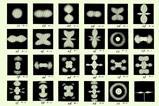Philip Ball would rather forget the memory of water
I met Jacques Benveniste in 2004, shortly before he died. He had much Gallic charm, and I rather liked him. But I felt then, as I do now, that in ’discovering’ the so-called memory of water he lost his way as a scientist.
In 1988, Benveniste published a paper in Nature that seemed to offer evidence of how homeopathic remedies can have a physiological effect even after being so diluted that not a single molecule of the original ingredient remains.1 Homeopathic remedies may undergo up to 200 tenfold dilutions of the original ’mother tincture’ - quite sufficient to wash away even the awesome magnitude of Avogadro’s constant.
The paper inevitably sparked a huge controversy. Several laboratories tried to repeat the experiment, but never with unambiguous results, and Benveniste’s work came to be seen as a classic example of what US chemist Irving Langmuir called ’pathological science’. Yet homeopaths still cite those results to justify their practice, and a special issue of the journal Homeopathy2 now presents a dozen scientific papers on the current status of the memory of water.
In principle it’s a commendable enterprise. The papers report some puzzling experimental results that deserve further attention. And the journal does not duck criticism, including a paper from renowned water expert José Teixeira of CEA Saclay in France that expresses the sceptic’s viewpoint.
But the collection nonetheless exposes this field as an intellectual shambles. Trying to explain homeopathy through some kind of aqueous memory effect has plenty of problems created by the traditions of the field itself, in which remedies are prepared by serial dilution and vigorous shaking, called succussion. For example, as pointed out in a paper by David Anick of the Harvard Medical School and John Ives of the Samueli Institute for Information Biology in Virginia, if we are to suppose the memory to be somehow encoded in water’s structure, then we must accept that there should be many thousands of such stable structures, one for each specific homeopathic remedy.
They propose an alternative explanation which invokes the dissolution of silicate anions from the glass walls of the vessel, followed by their polymerisation into a robust nanostructured silicate particle around the template of the active ingredient initially present. Certainly, silicate does get added, in minute quantities, to water held in glass (this seemed to be one of the possible explanations for another piece of pathological science, polywater3). But how to progress beyond there, particularly when a dilute solution favours hydrolysis of polysilicates over their condensation?
Well, say Anick and Ives, there are plenty of examples of silicate solutions being templated by solutes. That’s how ordered mesoporous forms of silica are synthesised in the presence of surfactants, which aggregate into micelles around which the silica condenses.4 But this templating has been seen only at high silicate concentrations, and when the template is positively charged, complementary to the negative silicate ions. It gives a crude cast, very different from a biologically active replica of an enzyme or an organic molecule. The template is in general encapsulated by the silica, and so doesn’t act catalytically. And for this idea to work, the polysilicate structure has to be capable of reproducing itself once the template has been diluted away - and at just the right replication efficiency to keep its concentration roughly constant on each dilution.
Another prominent hypothesis for water’s memory draws on a theory developed by Italian physicists Giuliano Preparata and Emilio Del Guidice.5 They claimed in 1988 that water molecules can form long-ranged ’quantum coherent domains’ by quantum entanglement, a phenomenon that makes the properties of quantum particles co-dependent over long ranges. Entanglement certainly exists, and it does do some weird stuff. But quantum coherent domains have never been observed in water, and the theory is widely disregarded by physicists. And nobody has really explained how it might create a ’memory’ in any case.
On this evidence, one has to conclude that you can find an explanation for water’s memory from just about any physical phenomenon you care to imagine - dissipative non-equilibrium structures, nanobubbles, epitaxial ordering, gel-like thixotropy, oxygen free radical reactions - all taking virtually no account of what is known with confidence about water’s molecular-scale structure.
The hope seems to be that a large enough number of flimsy arguments add up to a single strong one. It all leaves me feeling about homeopathy much as I do about religion: those who find it genuinely helpful are right to use it, but they shouldn’t try to use scientific reason to support their decision.
References
1 E Davenas et al, Nature, 1988, 333, 816 (DOI: 10.1038/333816a0)
2 P Fisher, Homeopathy, 2007, 96, 141 (DOI: 10.1016/j.homp.2007.05.008)
3 F Franks Polywater, MIT Press, Cambridge, MA, 1981
4 C T Kresge et al, Nature, 1992, 359, 710 (DOI: 10.1038/359710a0)
5 E Del Guidice et al, Phys. Rev. Lett., 1988, 61, 1085 (DOI: 10.1103/PhysRevLett.61.1085)

















No comments yet